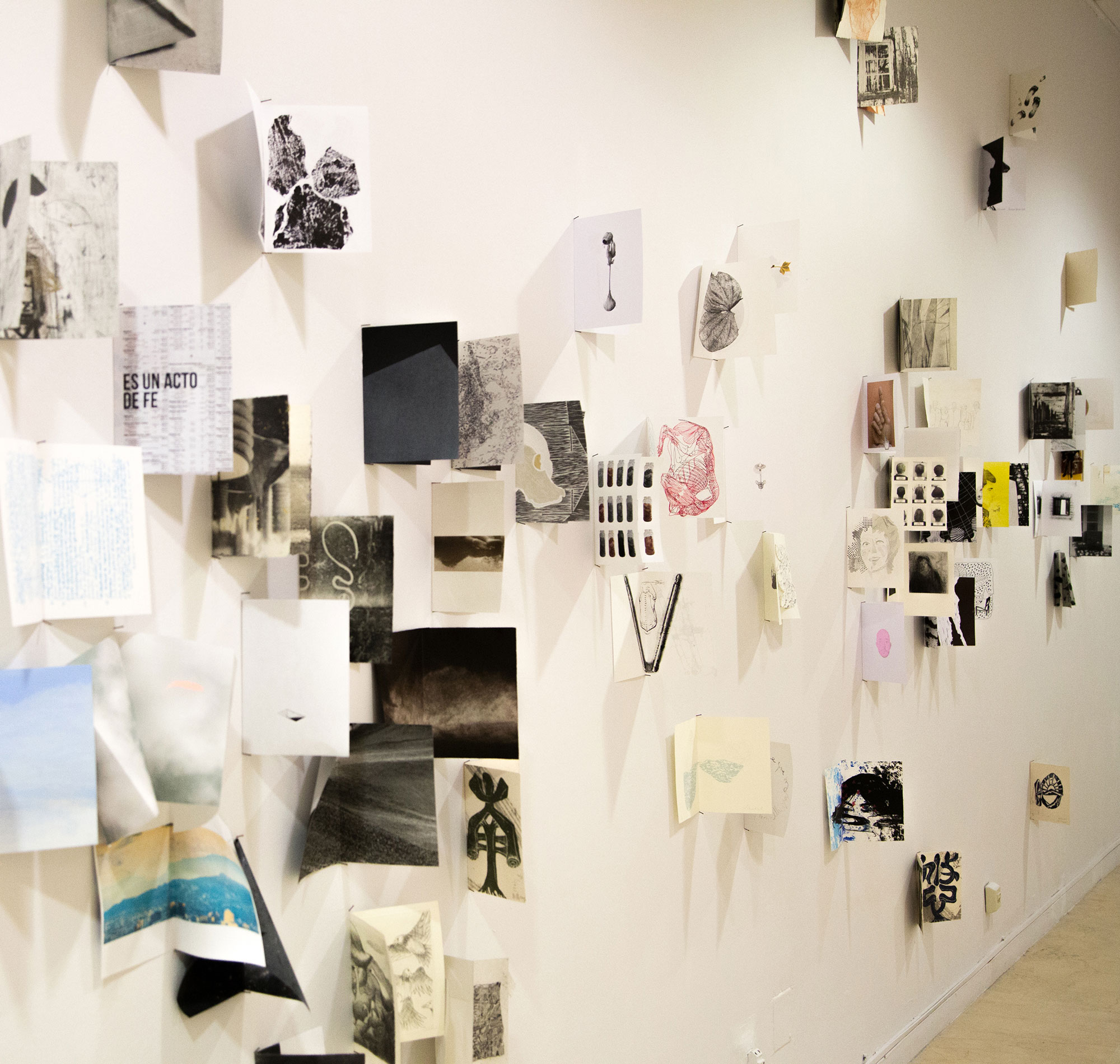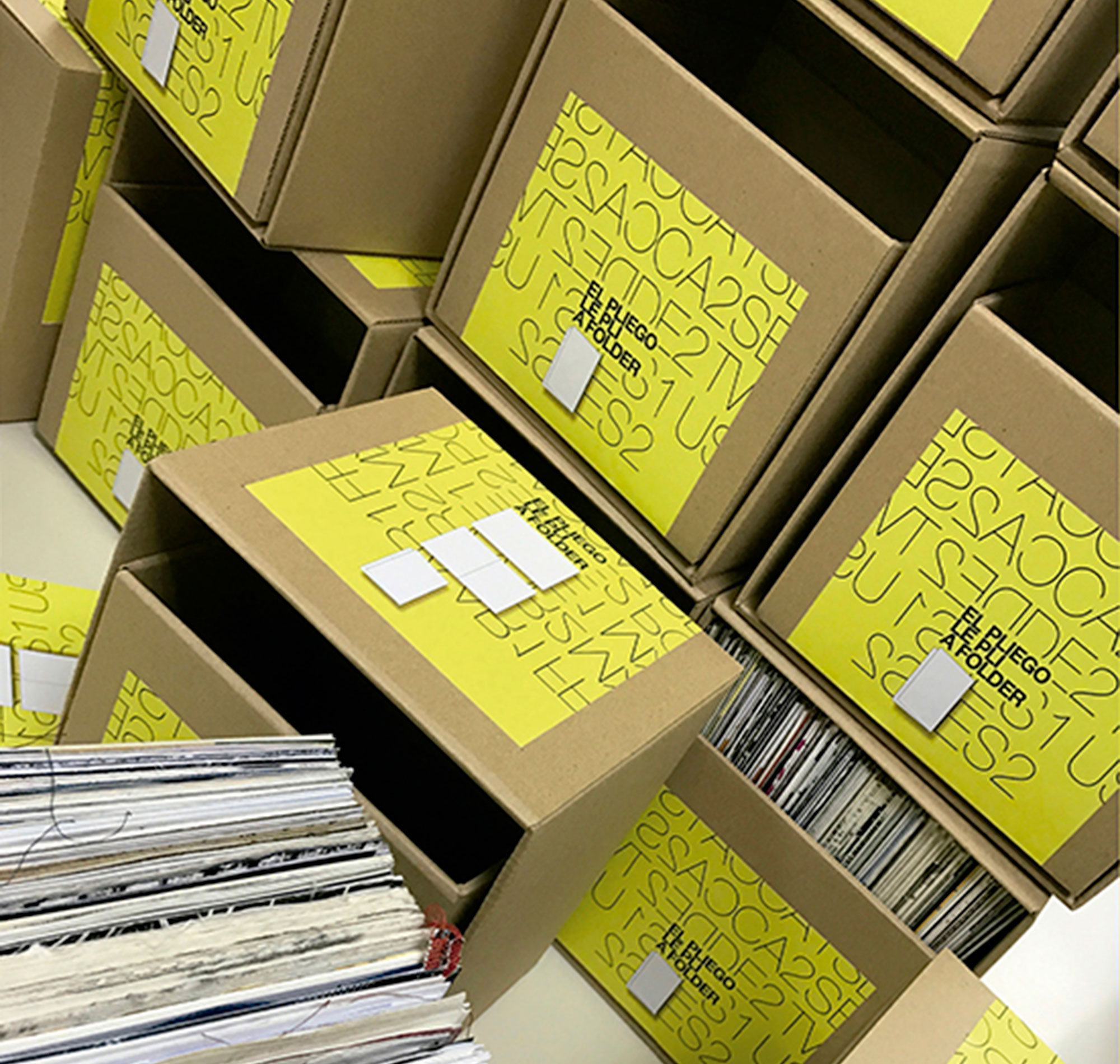el pliego / le pli / a folder
_ Disciplines
graphics
digital print
_ Development and Implementation
El Pliego
Le Pli
A Folder
3rd Project for the creation of international exchange between universities and training centres in graphic art and editing. On this occasion, the proposal is to reflect on the idea of the folder, starting from the space of a folded sheet, and the encounter provoked by this folding.
_ The origin
This project aims to continue promoting cross-border cultural circulation that facilitates graphic editing, multiplication, versatility and portability, thus revaluing the book format from its base module, THE FOLDER. The FOLDER consists of an entire space divided into four distinct and supportive spaces in which opposition, reflexivity, adjacency and sequencing relations are established. A folder, used as a book, can be opened and closed, saved, displayed, and concealed at the same time. Joining the different folders together gives rise to a book, a device defined by that emergency and encounter zone, the fold, understood as the folding hinge.
_ when 1+1 add to more than two. on the sum of folders...
The initial objective of THE FOLDER project was to gather and compile all folders received into a single large book, by reorganising and combining them in the form of an exquisite corpse. The rotating corpse consists of a set of words/images, used as a sequence of words or partial images, to construct a sentence or a complete image, without any premeditated sense.
_ result
In the project "THE FOLDER/TWICE UNFOLDED", the book is an idea, an aspiration that justifies the format of the works, and is presented deconstructed here to show its constituent parts, by placing value on the fold and discarding the usual layout and generation processes and elements of the printed volume (spine, rib, covers, guards). It is also a hypertrophic book, a book that has evolved much in its content and structure, whose design needs rethinking in an alternative manner, by challenging the conventional.
The notebook brings the book to life and sets it in time and space. The fold line in this case, just like in the book, is an axis of symmetry that acts on a flat space (that of paper, an abstract representation and writing plane). Moreover, its nature contains the reflective or specular principle.


